Pentax is one of the big traditional photographic brands to make the transition from film into digital camera manufacturing, and it always seemed likely that it might one day make a full-frame digital SLR. However, it wasn’t until February 2015 that the company announced that it was planning to take that step – and now, after a year of looking at mock-ups under glass domes at trade shows, we finally have the Pentax K-1.
Specification-wise the new camera has plenty to attract enthusiast photographers – especially those who still have a collection of full-frame K-mount optics. For starters, the full-frame (35.9 x 24mm) 36 million-pixel sensor (supplied by Sony), 14-bit PRIME IV processing engine and 33-point SAFOX 12 autofocus system are new.
Furthermore, to enable greater detail resolution the sensor has no anti-aliasing (AA) filter; instead Pentax has included its AA filter simulator to reduce moire patterning when needed. This system uses a combination of in-camera software and micro vibrations at a sub-pixel level during the exposure to reduce moire patterning.
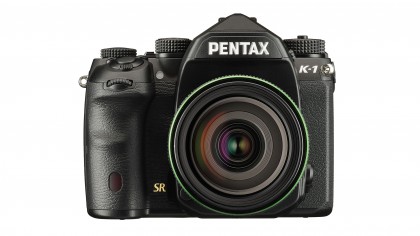
Pentax likes to make good use of the ability to shift the sensor in its cameras, and it’s no different with the K-1. The primary purpose of the technology is to compensate for accidental movements, and the Shake Reduction II system acts across 5 axes, having a claimed 5-stop impact.
There’s also the clever Astro Tracer system, which uses data from the GPS system to guide the movement of the sensor during exposures of up to five minutes to record stars as sharp dots rather than streaks. And let’s not forget the sensor-shifting composition adjustment and level correction options.
Pentax’s Pixel Shift Resolution system is also on hand to produce better colour by enabling each pixel to record the full colour information. This works by taking four images in quick succession, with the sensor moving by one photosite’s width between each shot. Pentax has improved the system to the extent that it’s now claimed to be usable when the camera is hand-held, and for moving subjects; nevertheless the company still recommends using a tripod for the best results.
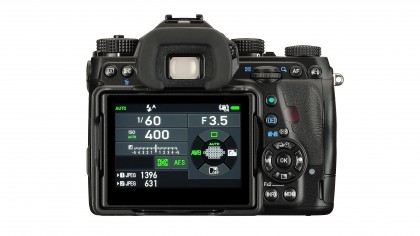
Although the PRIME IV processing engine is said to be 50% faster than the PRIME III, the K-1 can only muster a maximum continuous shooting rate of 4.4 frames per second (fps), so it’s unlikely to be the first choice of serious sports photographers. Video recording is also a little limited, with Full HD (1920 x 1080) maxing out at 60i/30p in the H.264 format. There is, however, a mic connection and headphone port, as well as the option to shoot 4K time-lapse sequences.
One benefit of the new processing engine is that it enables a new noise reduction algorithm to be employed and this, together with the larger pixel size enabled by the bigger sensor, has given Pentax the confidence to offer a maximum sensitivity setting of ISO204,800 – yes, that’s a native, or standard, setting.
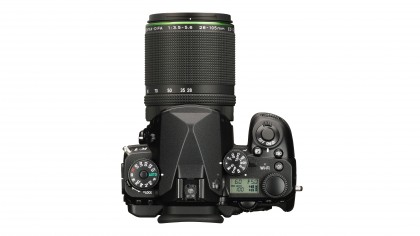
Metering is handled by an 86,000-pixel RGB sensor which supplies data to the Real-Time Scene Analysis, keeping an eye on subject colour and brightness.
Being an SLR, the K-1 has an optical viewfinder. Pentax has opted for the high-quality pentaprism type rather than a pentamirror, and it gives 100% coverage. On the back of the camera there’s a 3.2-inch 1,037,000-dot LCD that’s mounted on a novel tilting mechanism – more on this later.
It hardly needs saying these days, but the K-1 has built-in Wi-Fi connectivity that enables images to be transferred to a smartphone or tablet, and for the camera to be controlled remotely. There’s also the GPS unit mentioned earlier, and a digital compass to record which way the camera is pointing when a shot is taken.
When I first picked up the K-1 I thought it was comfortable to hold, and my opinion hasn’t changed after using it for long periods of time. The front grip is nice and deep (from front to back) so your fingers have room to reach down and round, yet it’s not too wide, so your fingers aren’t stretched. It’s also well-sculpted, and the textured coating is very tactile and ‘grippy’.
On the back of the camera there’s a slim but ergonomic thumb-ridge which, in combination with the front grip, makes the camera feel very safe in your grasp.
Overall the camera feels well made and durable thanks to the magnesium alloy construction. In addition, the dials are nice and solid, with a good level of torque. And as we expect with Pentax, all the controls, joints and ports are sealed to prevent the ingress of dust and moisture – this is a camera that you shouldn’t have to quickly put away if it starts to rain when you’re out on a shoot. It also continues to operate down to -10C.
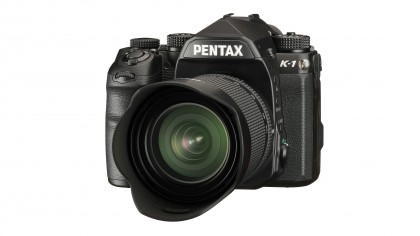
However, during the course of my testing I found that the sealing cap for the mic port, and to a lesser extent the one for the headphones port, was frequently protruding from the camera. It must get caught by the strap or on clothing as the camera is carried, and starts to work loose, so it can’t be relied upon to give a completely weatherproof seal.
The K-1 is designed for enthusiast photographers who want to take control of their camera and adjust settings on a frequent basis. Consequently it has a liberal covering of buttons and dials to give fast access to key features.
A new Smart Function Dial on the top plate is especially useful, with marked settings for Shake Reduction, Grid Display, HDR, Bracketing, continuous shooting speed, sensitivity, Wi-Fi and APS-C format Crop. Once you’ve turned the dial to the appropriate option, the desired setting is selected using another (unmarked) chunky dial on the top plate. It takes a little while to get used having these features on a dial rather than finding them in a menu or looking for dedicated buttons, but it’s neat and convenient.
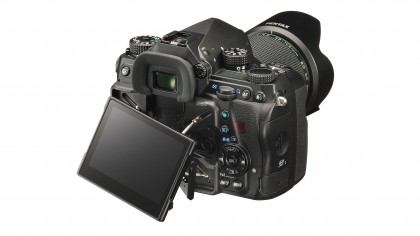
It’s not without its quirks though. For example, after setting the dial to the Bracketing option and then adjusting the exposure range of the three shoots, I discovered that it’s not possible to turn off the bracketing using the dials. I had expected to be able to reduce the exposure variation to zero. Instead you need to access the drive mode options (via the up navigation key) and switch the camera back to single-frame shooting. This needs to be ironed out with a firmware update.
I tended to leave the Smart Function Dial set sensitivity, so that I could adjust the value quickly with the camera held to my eye.
Exposure compensation is set in a fairly traditional way, by pressing the dedicated button near the shutter release and rotating the dial on the back of the camera near the thumb rest.
The standard information display on the main screen is clear, and it changes promptly as settings are altered – and it’s one of the less-dated looking screens that the K-1 displays (see below for more on this). It shows whether the camera is in AF point selection mode; if it isn’t, this can be selected with the press of a button. Once activated, the desired AF point is chosen via the navigation keys.
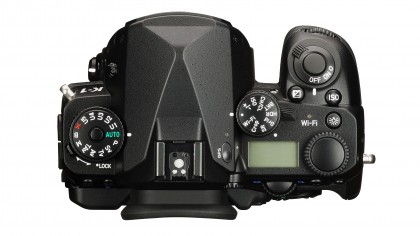
It’s a neat system that compensates pretty well for the lack of a dedicated AF point selection control, but there are times when you forget to check the mode, and you end making settings adjustments instead of moving the AF point.
Pressing the Info button on the back of the camera activates a screen that shows 20 features which can be adjusted. The icons are small, however, and the purpose of some is not immediately clear. This is also the case with other menus, and one criticism we’ve levelled at Pentax SLRs in recent times is that their menus look dated; the same can be said of the K-1 – it’s not a major issue, but it’s still a fact.
Time and use will reveal an icon’s purpose, and they’ll eventually become familiar, but it could lead to some confusion or frustration in the early days. This could be addressed with firmware updates, but they take time and money. Of course a key reason for sticking with this interface is to help users who want to upgrade or swap between cameras on a frequent basis.
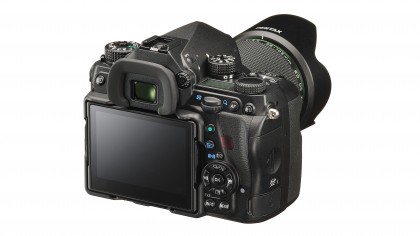
The K1’s viewfinder is nice and bright, giving a very slight boost to contrast and a little warmth to the scene, making it a tiny bit more photogenic than it is in reality. There’s a just-visible fine-grained texture, and from some angles there’s even a faint radiating pattern of concentric circles.
Images can also be composed on the 3.2-inch 1,037,000-dot LCD, which provides a clear view. This is mounted on an unusual tilting mechanism which enables the screen to be pivoted around through 35 degrees horizontally and 44 degrees vertically; it can also be pulled out for waist-level shooting. I found the articulation useful when shooting with the camera in landscape orientation, or at a slight angle, but it’s more restricted when you’re shooting in portrait format.
A tilting or vari-angle screen is sometimes considered a weak point on a camera, but I was encouraged to test the strength of the K-1’s mechanism by holding the screen and dangling the camera, swinging it around to test the movement. It certainly proves the point – it doesn’t feel like it will give way or detach easily.
We’ve been impressed with the quality of images from Pentax’s recent SLRs, which strike a good balance between detail and noise visibility, and on the whole the K-1 maintains that standard. Low- to medium-sensitivity images have lots of detail, with fine-textured noise building up towards the higher ISO values. The results at ISO6400 are very good, with lots of detail and little noise. Detail levels start to slide at around ISO25,600, but the images are still decent.
Even the results at ISO102,400 and ISO204,800 are okay, but they look more like the results of expansion settings than native values. At a relatively small size on-screen some darker areas are badly smudged, and elements in the JPEGs have a slight diffuse glow. Step down to ISO51,200/25,600 and there’s a marked improvement – images look pretty good at A3 size, with just a fine texture of luminance noise visible in raw and JPEG files.

Click here for the full-resolution image

Click here for the full-resolution image

Click here for the full-resolution image
Colour-wise the K-1 produces vibrant images at the default settings. As usual there’s an option to boost the saturation of JPEGs if you like, but I suspect that most K-1 users will prefer to process the raw files to get things looking just as they want them. Nevertheless, it’s nice to be able to give JPEGs a bespoke look, and I like the results that are produced when saturation is reduced and contrast boosted in-camera.
As with the K-3 II, there’s a boost to detail resolution and an improvement in colour gradation when the K-1’s Pixel Shift Resolution system is employed, but it’s only just visible in images viewed at 100%. The impact is subtle, and there’s a significant boost in file size (but not image size), with raw files typically jumping from around 43MB to 155MB.

Click here for the full-resolution image

Click here for the full-resolution image

Click here for the full-resolution image
As promised by Pentax, activating the Motion Correction option enables both handheld shooting and the capture of scenes containing moving objects. Without Motion Correction the moving water of a river is flecked red, green and blue, but with it the water looks natural.
I shot a wide range of subjects during my testing, and I didn’t come across any instances when I needed to use the AA filter simulator system.

Click here for the full-resolution image
Click here for the full-resolution image

Click here for the full-resolution image
Pentax cameras and lenses aren’t the natural choice of sports photographers, as they’re not known for their automatic focusing speed. With the right lens the K-1’s AF system can be pretty snappy, but it can’t keep up with children moving around quickly, or a bounding dog. I shot several sequences of images of a dog running towards me, and even though the active focus point was on the dog’s face, the sharp point is further down its body – if the dog slowed to a walk the K-1 was able to keep up.
Switching to live view mode, the contrast detection system delivers a typical non-hybrid focusing SLR experience – it’s slow, and adjusts backwards and forwards before settling on the target. Anyone shooting video is advised to stick with manual focusing if they need to adjust focus during recording.

Click here for the full-resolution image

Click here for the full-resolution image
In other respects the K-1 produces high-quality video footage, with good detail levels and pleasant colours.
The K-1’s Multi-segment metering system can be a little unpredictable – in some instances it produces perfect exposures with no intervention, but on other occasions fairly extreme exposure adjustment is required. When shooting a peacock against a background of sunlit grass, for example, I found I had to dial in +1.7EV compensation to get the bird anywhere close to correctly exposed; even switching to centre-weighted metering didn’t solve the problem.
We chose three rival cameras for the Pentax K-1 to see how it measured up in our lab tests: the Sony Alpha 7R, the Nikon D810 and the Canon EOS 5D Mk III.
We’ve carried out lab tests on the Pentax K-1 across its full ISO range for resolution, noise (including signal to noise ratio) and dynamic range. We test the JPEGs shot by the camera, but we also check the performance with raw files. Most enthusiasts and pros prefer to shoot raw, and the results can often be quite different.
Pentax K-1 resolution charts
We test camera resolution using an industry-standard ISO test chart that allows precise visual comparisons. This gives us numerical values for resolution in line widths/picture height, and you can see how the Pentax K-1 compares with its rivals in the charts below.
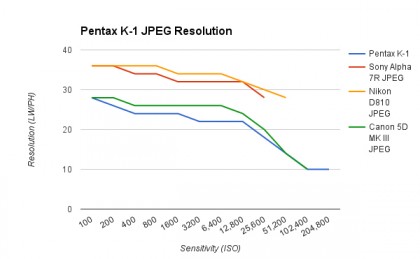
JPEG resolution analysis: There was a clear difference between the K-1’s JPEG and raw file results in our lab testing. This was far less apparent with real world images, but the JPEGs are a little softer. The K-1’s results lag behind those of the competition, including the Canon 5D Mk III, which has a lower pixel count.
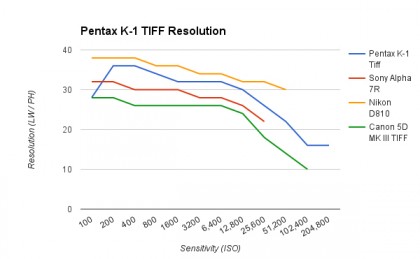
Raw (converted to TIFF) resolution analysis: The K-1’s raw files (after conversion to TIFF) compare much more favourably with the competition than the JPEGs, matching or beating the 36MP Sony A7R at most sensitivity settings. As ISO values rise, though, it can’t maintain detail levels quite as well as the Nikon D810.
Dynamic range is a measure of the range of tones the sensor can capture. Cameras with low dynamic range will often show ‘blown’ highlights or blocked-in shadows. This test is carried out in controlled conditions using DxO hardware and analysis tools.
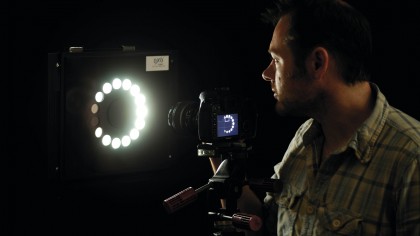
Read: Noise and dynamic range results explained
Dynamic range is measured in exposure values (EV). The higher the number the wider the range of brightness levels the camera can capture. This falls off with increasing ISO settings because the camera is having to amplify a weaker signal. Raw files capture a higher dynamic range because the image data is unprocessed.
Pentax K-1 dynamic range charts
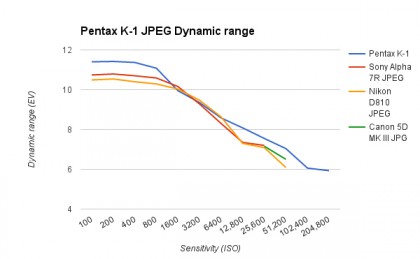
JPEG dynamic range analysis: At the lower sensitivity values the K-1 produces JPEGs with unusually high dynamic range.
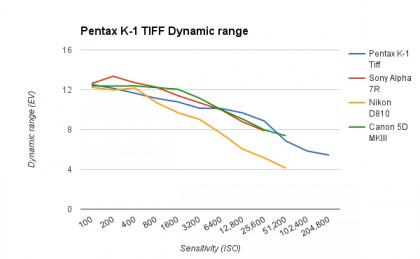
Raw (converted to TIFF) dynamic range analysis: Pentax manages to eke out a little more dynamic range from the K-1’s raw files, indicating that they have an even broader range of tones than the impressive JPEGs and should stand up well to post-capture contrast adjustment.
This is a test of the camera’s noise levels. The higher the signal to noise ratio, the greater the difference in strength between the real image data and random background noise, so the ‘cleaner’ the image will look. The higher the signal to noise ratio, the better.
Pentax K-1 signal to noise ratio charts
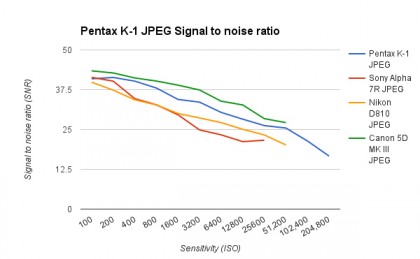
JPEG signal to noise ratio analysis: The K-1 produces an impressive set of figures for a 36MP camera, and is only beaten by the lower-resolution Canon 5D Mk III, but even then not at all sensitivity settings.
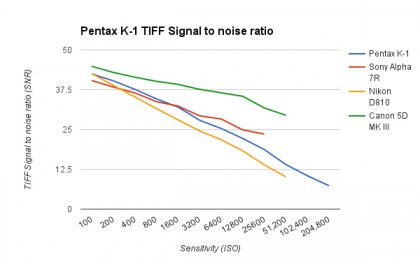
Raw (converted to TIFF) signal to noise ratio analysis: The K-1 again performs well, indicating that, apart from at the very high sensitivity settings, it produces images that are relatively free of noise.
Sample Pentax K-1 ISO test results
The signal to noise ratio charts use laboratory test equipment, but we also shoot a real-world scene to get a visual indication of the camera’s noise levels across the ISO range. The right side of the scene is darkened deliberately because this makes noise more obvious.

ISO200: Click here for a full-size version

ISO6400: Click here for a full-size version
In addition to headline features like the 36MP full-frame sensor, Pixel Shift Resolution and Shake Reduction II, the K-1 has some really nice touches. The GPS, which enables images to be tagged with location data, for example, can be turned on and off with a press of the dedicated button, so there’s no need to search through the menus to find it, or worry about the battery being flatted.
There are LED lights to make the camera easier to operate in the dark, while the Smart Dial on the top of the camera provides a means of adjusting settings quickly, and there are plenty of shortcut buttons so that you don’t have to delve into the menus too often. There’s also quite a bit of customisation available, so you can set up the camera to suit your preferences.
We liked
One of the most attractive things about the K-1 is that it offers a rugged build and a full-frame sensor at a relatively affordable price. It’s not cheap, but it compares favourably with the likes of the Nikon D810, Canon 5D Mk III and Sony Alpha 7R II. And, in addition to the recently enlarged selection of current full-frame Pentax lenses, any Pentax K-mount optic produced since 1975 is compatible – that’s not to say they’ll necessarily produce spectacular results, but they can be used.
The camera is also very well shaped, so it’s comfortable to hold for long periods of time.
Pentax’s Pixel Shift Technology is clever, and it’s great that the company has managed to produce a mode that can be used when the camera is hand-held, although the impact is subtle.
We disliked
It won’t be an issue for everyone, but the K-1’s menu system looks very old-fashioned, and some of the icons on the Control Panel are difficult to interpret.
The top two sensitivity settings produce the type of results we’d expect to see from expansion settings; they’re not for everyday use. It’s also disappointing that autofocus isn’t a bit faster – it makes shooting moving subjects a frustrating experience.
Final verdict
Recognising that attention is shifting towards mirrorless cameras, and that it’s late in bringing out a full-frame SLR, Pentax has introduced the K-1 at an attractive price. Its launch price is less than the current street price of cameras such as the Canon 5D Mk III and Nikon D810.
It’s less of an all-rounder than the 5D Mk III, but the K-1 makes an excellent camera for landscape, still life and portrait photography, or any genre that doesn’t require fast autofocus and which benefits from a high pixel count for detail resolution. The K-1 also offers a few novel features, including the ability to record trail-free shots of the night sky.